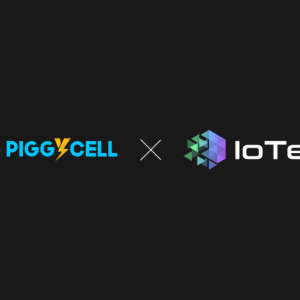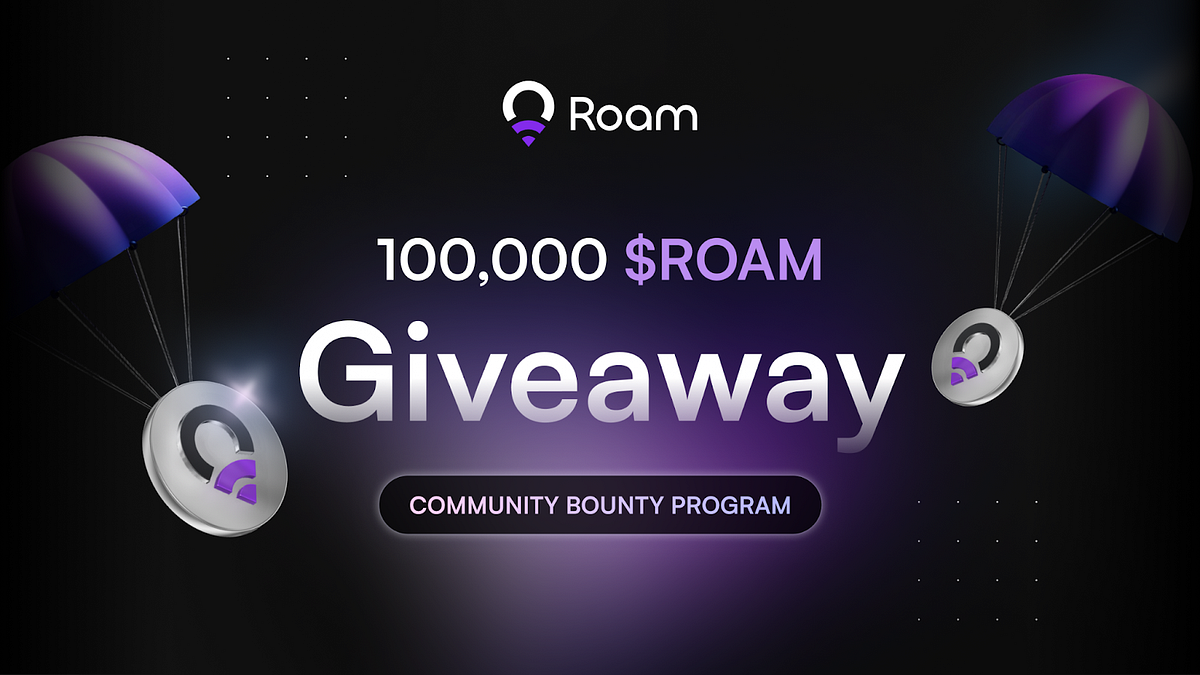Latest DePIN News

3 months ago
Qubetics Emerges as a Game-Changer in the Crypto Space
The crypto landscape is witnessing significant advancements with projects like Arweave and AAVE leading the charge. Arweave is gaining traction for its innovative approach to permanent data storage, providing a decentralized solution that ensures data remains accessible and unaltered indefinitely. This model is attracting attention from major organizations looking to archive crucial information without the risk of censorship or data loss. Meanwhile, AAVE continues to solidify its position in decentralized finance (DeFi) by enhancing its lending and borrowing protocols, expanding its ecosystem across multiple blockchains, and implementing robust security measures to protect users from market volatility.
Emerging as a formidable contender in this space is Qubetics ($TICS), touted as the world's first Web3 aggregator. This project aims to simplify blockchain development through its unique QubeQode IDE, which allows developers and businesses to create decentralized applications with ease. By unifying the best features of various blockchains, Qubetics is not only making crypto more accessible but also positioning itself as a potential game-changer with its presale already raising over $13.9 million. Investors are eagerly eyeing this opportunity, with predictions suggesting that the token price could soar significantly by the time of its mainnet launch in Q2 2025.
As the crypto market evolves, the competition among these projects intensifies. Arweave's focus on permanent data storage and AAVE's innovations in DeFi are commendable, but Qubetics' approach to bridging the gap between traditional businesses and blockchain technology could set it apart. With its groundbreaking QubeQode IDE and a promising presale, Qubetics is emerging as a frontrunner for those seeking high-potential investments in the crypto space. As the industry continues to grow, it will be intriguing to see which project ultimately leads the next wave of innovation and investment opportunities.

3 months ago
Introducing WeatherXM Pro: Revolutionizing Access to Hyperlocal Weather Data
WeatherXM Pro is an innovative weather API platform designed to enhance the demand side of the $WXM economy by providing access to hyperlocal weather data. With a network of over 8,000 weather stations globally, WeatherXM Pro allows users to pull raw data and improve forecasting models. This platform is particularly beneficial for meteorological companies and local communities, especially in underserved regions like Africa and Latin America, where accurate weather data is essential for preparing for extreme weather events. The initiative aims to bridge the gap between on-chain and off-chain data, making weather information more accessible and reliable.
One of the standout features of WeatherXM Pro is its ability to deploy weather stations in areas lacking infrastructure, using strategies like the Cell Bounty program. This program incentivizes users to stake $WXM tokens in specific locations to gather data, thus expanding coverage in regions where demand is high. Additionally, the platform offers Forecast Accuracy Tracking (FACT), which aggregates data from over 40 meteorological models to evaluate their performance against real-world observations. This feature ensures that users receive the most accurate forecasts tailored to their specific locations, enhancing the reliability of weather predictions.
Moreover, WeatherXM Pro integrates on-chain weather data, utilizing specialized hardware that includes cryptographic proofs. This allows the data to be used in prediction markets and weather derivatives, such as parametric weather insurance. The API component of WeatherXM Pro enables developers to easily access and integrate high-quality weather data into their applications, providing tools for monitoring weather trends, historical observations, and forecasts. Overall, WeatherXM Pro represents a significant advancement in the accessibility and accuracy of weather data, catering to various industries and communities worldwide.

3 months ago
XNET Mobile: Pioneering Decentralized Wireless Solutions
Alpha Sigma Capital Research has recently published a comprehensive report on XNET Mobile (XNET), a key player in the decentralized wireless (DeWi) sector. As the demand for mobile data continues to rise, traditional mobile network operators (MNOs) and mobile virtual network operators (MVNOs) are facing significant challenges in scaling their infrastructure effectively. XNET is tackling this issue with a blockchain-based solution that not only enhances network capacity but also minimizes the dependence on expensive physical infrastructure. The report highlights several key features of XNET, including its ability to connect over 150 million mobile devices seamlessly and provide scalable data offloading through carrier-grade WiFi and LTE/5G interconnects.
The report emphasizes XNET's strategic partnerships, notably with AT&T, showcasing its capability to integrate with established MNOs to improve network scalability. Additionally, XNET is expanding its decentralized network using advanced technologies like WiFi 6+ and Citizens Broadband Radio Service (CBRS), which are crucial for enhancing connectivity in underserved and high-traffic areas. Operating on the Solana blockchain, XNET allows communities and entrepreneurs to build network infrastructure while earning tokenized incentives, marking a significant shift in the mobile wireless industry.
Despite facing liquidity challenges within the broader Decentralized Physical Infrastructure Networks (DePIN) sector, which have affected the performance of the $XNET token, the company is well-positioned for future growth. Enzo Villani, CEO of Alpha Sigma Capital, remarked on the transformative potential of XNET’s approach, stating that it provides a sustainable solution to meet the increasing demand for reliable mobile connectivity. This innovative model not only disrupts traditional mobile infrastructure but also paves the way for a more decentralized and efficient future in telecommunications.

3 months ago
NodeOps: Node-as-a-Service Platform
https://www.techtimes.com/articles/309470/20250223/node-service-101-heres-how-nodeops-simplifies-process.htm

3 months ago
Piggycell Partners with IoTeX to Enhance Decentralized Charging Network
In a significant development for the decentralized energy sector, Piggycell has announced a strategic partnership with IoTeX, aimed at integrating IoTeX's DePIN technology with Piggycell's extensive charging network. This collaboration is set to enhance connectivity, improve user experience, and foster innovation within the decentralized charging ecosystem. By incorporating IoTeX's DePINscan and ioID into its platform, Piggycell will benefit from increased transparency, security, and efficiency in managing its network of over 13,000 charging hubs and 100,000 batteries across South Korea.
The partnership marks a pivotal moment in merging blockchain technology with real-world infrastructure. IoTeX's modular approach to DePIN allows Piggycell to utilize advanced blockchain tools, facilitating a reciprocal deal pipeline, resource-sharing, and joint marketing efforts. This integration aims to enhance platform interoperability, introduce mutual incentive programs, and leverage secure transactions through DePINscan and ioID. The collaboration not only aims to improve user engagement but also to expand brand awareness through coordinated marketing initiatives.
As Piggycell dominates the South Korean mobile charging market with a 90% market share and over 4 million active users, the integration of IoTeX's DePIN modules is expected to enhance operational efficiency and create new revenue models, such as tokenized energy credits and Web3-native loyalty programs. With a growing interest in decentralized physical infrastructure networks, this partnership positions both Piggycell and IoTeX at the forefront of the energy revolution powered by Web3 technologies.

3 months ago
Roam Launches Community Bounty Program to Reward Engagement and Growth
Roam has launched a DePIN Open Wireless Network that utilizes OpenRoaming and blockchain technologies to provide secure and fast internet access globally. With a robust infrastructure of over 4.5 million nodes in more than 190 countries and nearly 2 million registered users, Roam is set to transform connectivity. The company is now inviting crypto enthusiasts to participate in its newly introduced Roam Community Bounty Program, which offers a chance to earn $ROAM tokens by engaging with the community and supporting Roam's growth.
The Roam Community Bounty Program features a total fund of 100,000 $ROAM tokens, with various categories for participation including content creation, social media engagement, and community participation. The program runs from February 22, 2025, to March 21, 2025, and encourages participants to submit original content across multiple platforms. Rewards are allocated weekly, with specific amounts designated for different activities, such as writing articles, creating videos, and engaging on social media. Participants can earn rewards based on the quality and originality of their contributions.
This initiative not only incentivizes community involvement but also aims to foster a vibrant ecosystem around Roam's decentralized network. Participants are encouraged to join the program and contribute in ways that resonate with their skills, whether through writing, video production, or active engagement in Roam's social channels. With a structured reward system and a focus on community, the Roam Community Bounty Program is an excellent opportunity for individuals to be part of a revolutionary approach to connectivity while earning $ROAM tokens for their efforts.

3 months ago
Helium (HNT) Faces Increased Selling Pressure Amid Bearish Market Sentiment
Helium (HNT) has recently experienced a significant downturn, with its price dropping by 20.11% over the past month. This bearish trend is reflected in the market sentiment, which has been declining alongside increasing selling pressure. Notably, the derivatives market has seen a spike in selling volume, surpassing buying volume, as indicated by the Taker Buy-Sell ratio falling to 0.963. This ratio, when below 1, signals heightened selling pressure, suggesting that traders are more inclined to sell HNT than to buy it. Furthermore, the Open Interest in derivative contracts has decreased by 19.80%, indicating a bearish market scenario as fewer contracts remain unsettled.
In contrast, the spot market presents a slightly different picture. Recent data shows negative Exchange Netflows, meaning that traders are transferring their HNT assets to private wallets for long-term holding rather than selling them. Approximately $250,000 worth of HNT has been moved out of exchanges in the last two days, suggesting that some market participants may be anticipating a potential recovery. However, despite this positive movement in the spot market, the overall sentiment remains cautious as sellers continue to dominate the market.
Looking ahead, HNT's price is at risk of falling sharply if it breaches the support level at $3.315. Analysts suggest that if selling pressure continues, HNT could drop to its 2024 low of $2.85, established on June 18. The current funding rate for HNT has turned positive at 0.0176%, indicating that there is still some buying sentiment present. Nonetheless, traders are advised to remain vigilant as the market dynamics continue to evolve, with the potential for further declines if selling momentum persists.

3 months ago
The Decentralization of AI Computing: A New Era of Demand and Efficiency
The AI industry is currently experiencing a pivotal moment characterized by the emergence of smaller and more efficient models, such as DeepSeek. Contrary to expectations, these advancements do not diminish the demand for computing resources; instead, they amplify it, aligning with Jevons’ Paradox, which suggests that increased efficiency can lead to greater overall consumption. As AI models become cheaper, faster, and more accessible, the demand for computing power continues to rise, raising critical questions about how to support widespread AI inference without creating new bottlenecks in the existing infrastructure.
Historically, AI has depended on large-scale centralized infrastructure controlled by hyperscalers, which has led to concerns about accessibility, pricing, and availability. However, the introduction of models like DeepSeek challenges this paradigm by demonstrating that efficiency gains can create new pressures on computing resources. As more individuals and organizations adopt AI technologies, the total compute demand is skyrocketing, particularly as open-source alternatives gain traction. This shift is evident in the rapid development of free and open-source models that outperform proprietary options, allowing startups and independent developers to participate in the AI landscape without the constraints imposed by traditional cloud providers.
As the demand for scalable and cost-effective AI infrastructure increases, decentralized computing is emerging as a viable solution. By distributing workloads across a global network of high-performance GPUs, this model addresses many inefficiencies associated with centralized systems. Decentralization not only enhances cost efficiency and scalability but also provides greater privacy and control over data. The success of models like DeepSeek illustrates the need for a shift toward distributed AI computing, where developers and researchers can operate independently of monopolized cloud infrastructure. The future of AI computing is not about reducing demand but adapting to an ever-growing need for computational power, ensuring that the AI ecosystem evolves in tandem with its advancements.

3 months ago
Mawari Launches Digital Entertainment City Namba: A Smart City Revolution
In a groundbreaking collaboration, Mawari has joined forces with Nankai Electric Railway Co., Ltd., Meta Osaka Co., Ltd., and e-stadium Co., Ltd. to launch the "Digital Entertainment City Namba" in Osaka, Japan. This innovative project aims to create the world’s first smart city that integrates artificial intelligence (AI), extended reality (XR), and decentralized physical infrastructure networks (DePIN) on a city-wide scale. By leveraging the unique strengths of each partner, the initiative seeks to blend advanced technology with everyday urban life, fostering a vibrant digital culture and addressing social challenges through community engagement.
Mawari's pivotal role involves deploying edge computing and rendering devices across Nankai’s properties to establish a decentralized streaming infrastructure. This setup enhances user experience by minimizing latency and enabling real-time interactions with lifelike AI avatars. These avatars are designed to assist in various tasks, such as guiding tourists and facilitating communication across language barriers. The project is a significant milestone for Mawari, as it aims to democratize AI-driven immersive experiences, with CEO Luis Oscar Ramirez emphasizing its potential for mass adoption and tangible social impact.
The projected impact of the Digital Entertainment City Namba extends beyond entertainment, targeting sectors such as tourism and labor. By providing multilingual 3D guides and immersive cultural experiences, the project aims to attract more foreign visitors to Japan, thereby boosting local businesses. Additionally, it addresses Japan's labor shortage by creating flexible, remote work opportunities through AI-driven avatars, promoting inclusivity for diverse groups. This initiative not only enhances accessibility but also aligns with Japan’s pressing need for innovative workforce solutions, marking a transformative step towards a digitally integrated urban future.

3 months ago
Digital Entertainment City Namba: A Fusion of AI and XR in Osaka
Digital Entertainment City Namba is an innovative extended reality (XR) project located in Osaka, Japan, which integrates artificial intelligence (AI) guides throughout the city. This initiative is powered by Mawari's decentralized physical infrastructure network (DePIN), showcasing how DePINs can effectively meet the computational demands of both XR and AI technologies. The collaboration involves key players such as Mawari, Meta Osaka, Nankai Electric Railway, and the Namba e-stadium, highlighting Osaka's rich cultural and technological heritage while pushing the boundaries of immersive experiences.
The project aims to enhance tourist experiences by utilizing virtual AI guides capable of performing various tasks, from providing guidance to offering customer service. These AI-driven characters are designed to facilitate intuitive interactions that transcend language barriers, making tourism more accessible. The integration of AI within XR experiences presents unique challenges, particularly due to the significant computational power required for graphics rendering and AI processing. DePINs, like those offered by Mawari, promise to alleviate these challenges by leveraging decentralized GPU networks to reduce latency and bandwidth demands.
As the demand for AI processing grows, the transition from graphical rendering to AI capabilities is becoming increasingly common among GPU DePINs. Notably, Render Network has successfully pivoted to include AI processing alongside its original focus on graphics. The Digital Entertainment City Namba project exemplifies this trend, illustrating the potential for decentralized GPU networks to support the convergence of XR and AI technologies. Furthermore, under Japanese law, DePIN tokens are classified as utility tokens, which helps to navigate regulatory challenges while fostering innovation in the sector.
Signup for latest DePIN news and updates